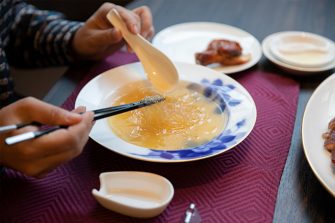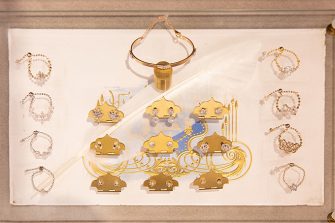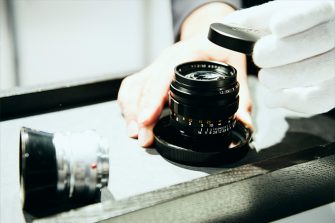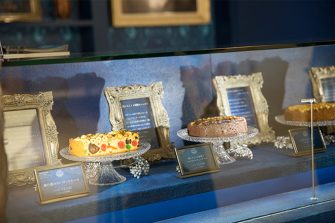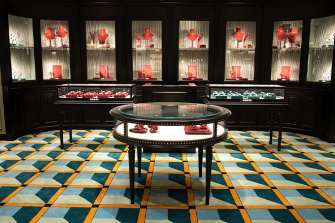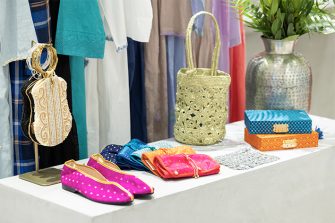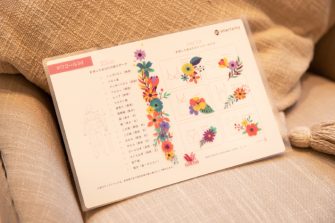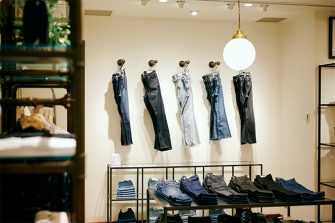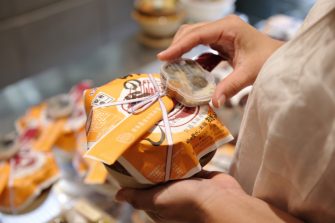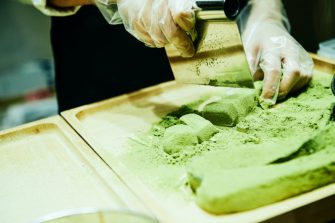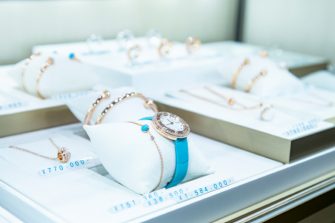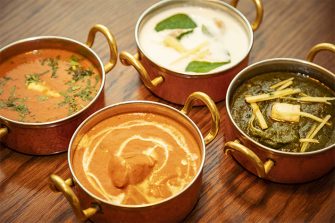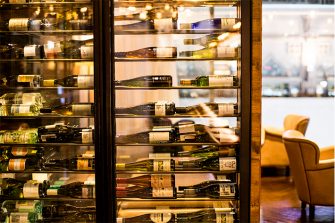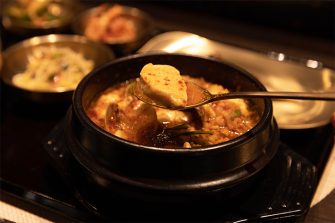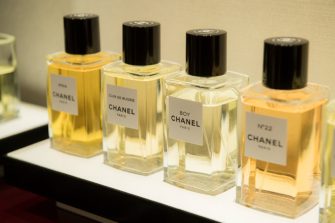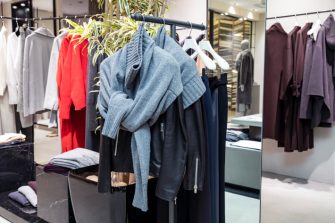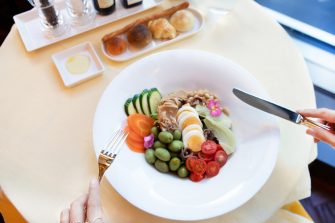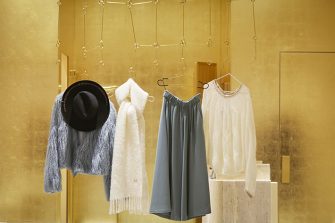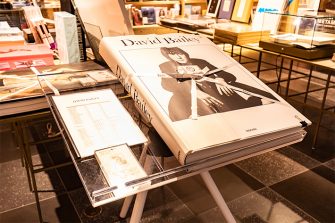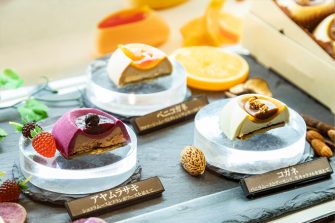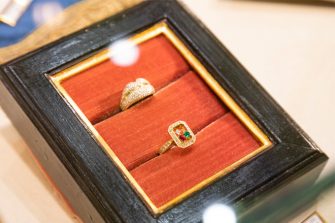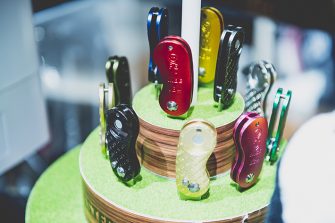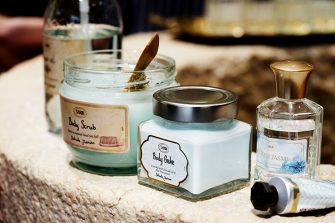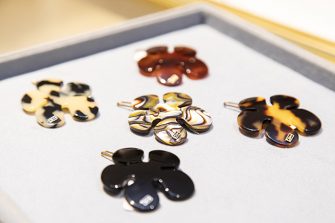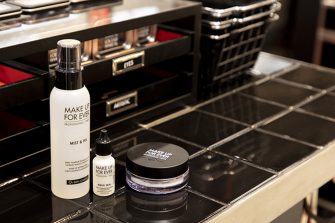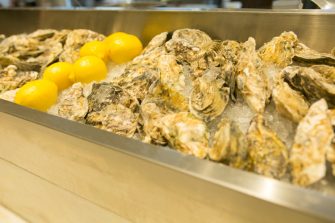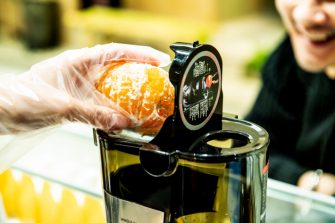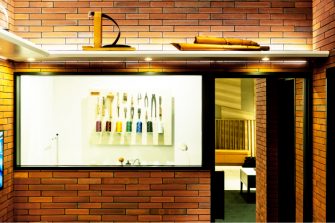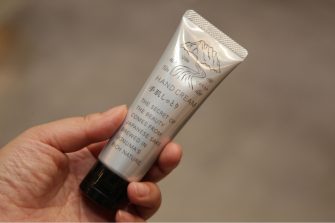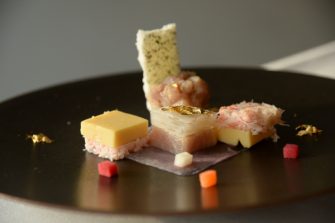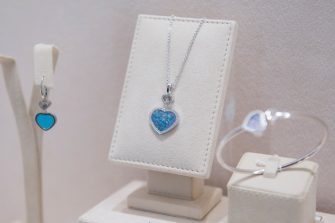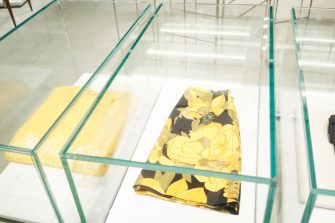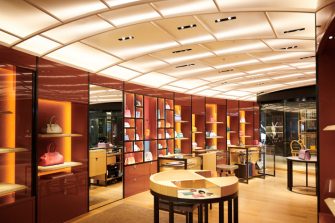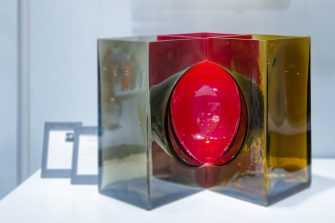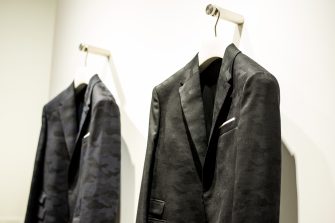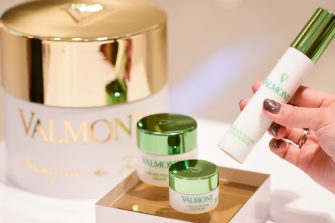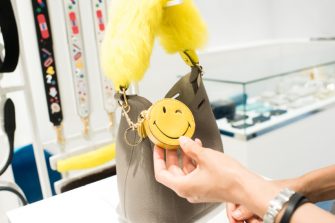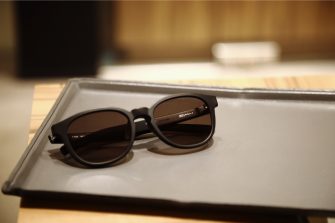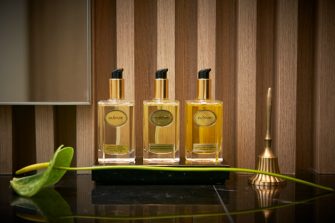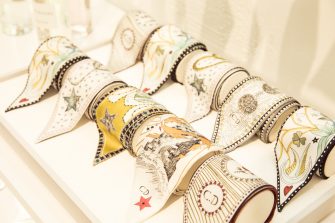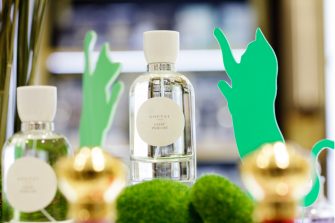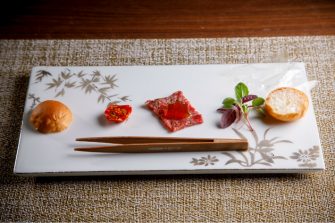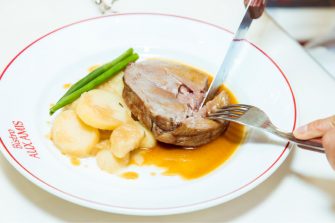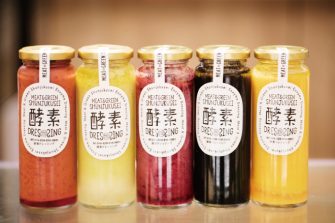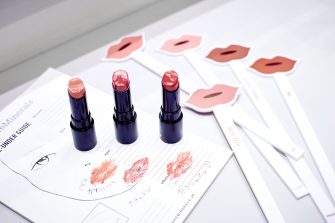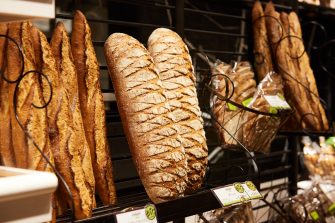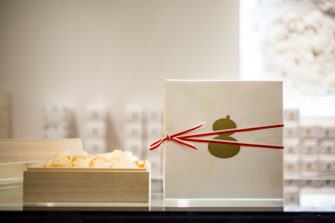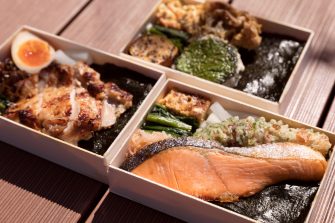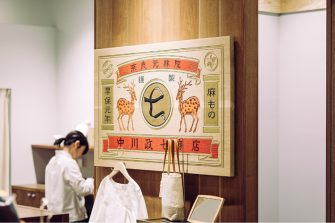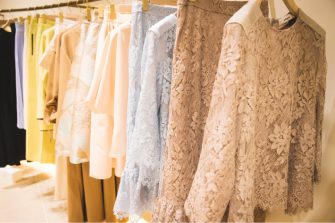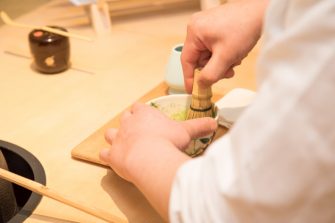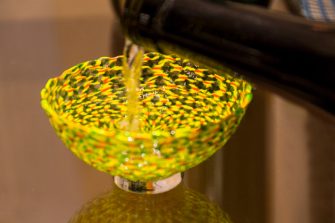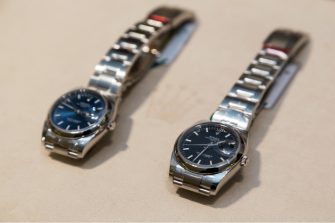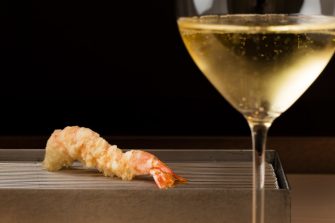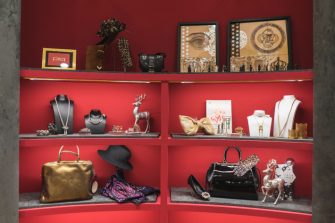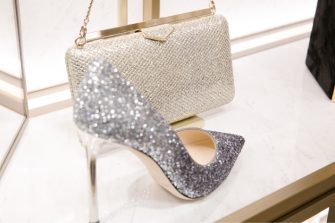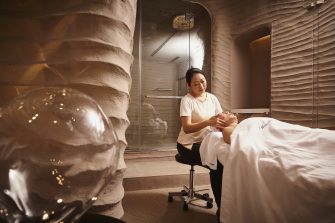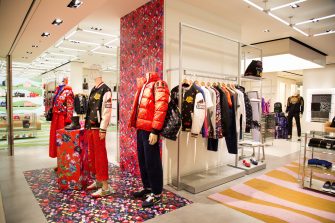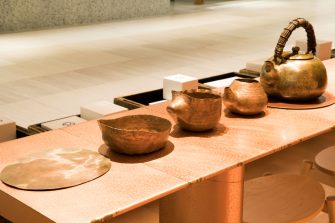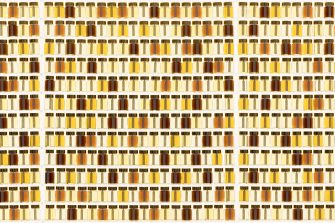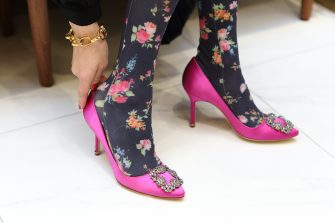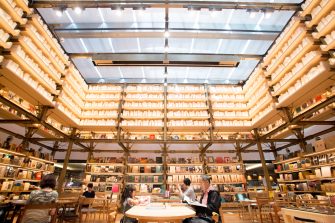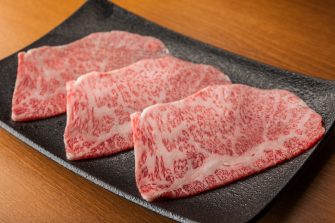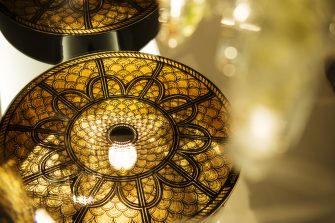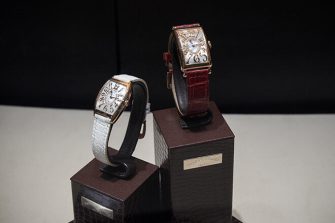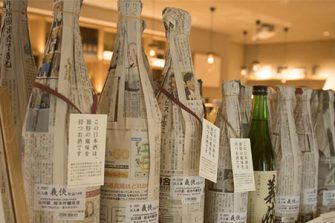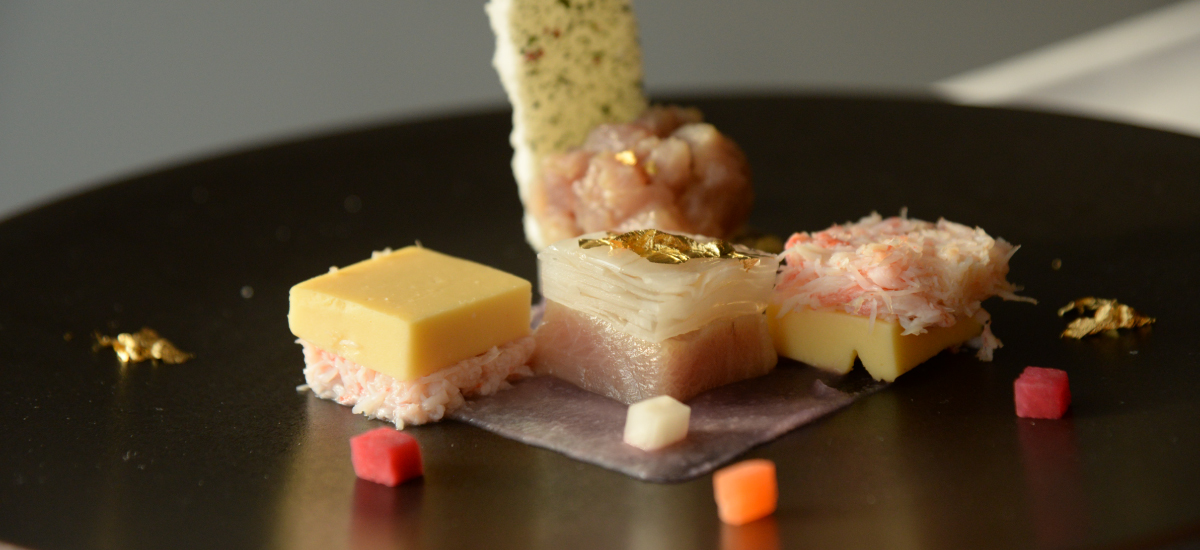

GINZA SIX EDITORS
ファッション、ジュエリー&ウォッチ、ライフスタイル、ビューティ、フード…
各ジャンルに精通する個性豊かなエディターたちが、GINZA SIXをぶらぶらと
歩いて見つけた楽しみ方を綴ります。
最先端のグルメの中に日本の食の魅力を見出す Discovering the Joys of Japan’s Leading Gourmet Cuisine
小松 宏子
GINZA SIX EDITORS Vol.70
銀座の真ん中にありながらGINZA SIXは、全国の食文化や素材の素晴らしさに触れられるスポットでもあるのです。個性派ぞろいのレストランやバーの中から、日本という国の風土の魅力を伝える3軒を選びました。
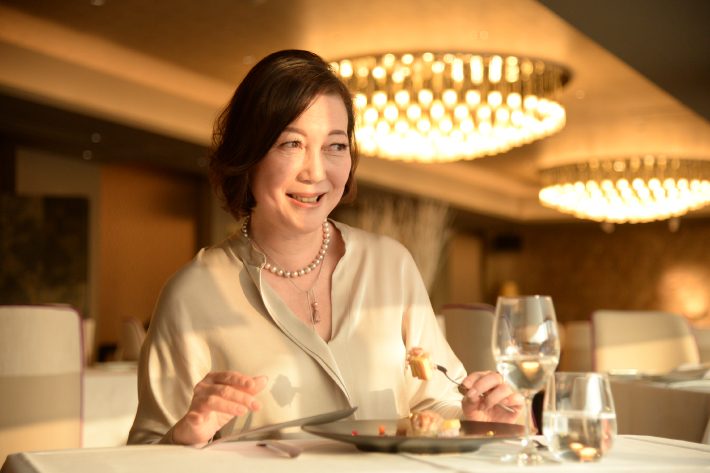
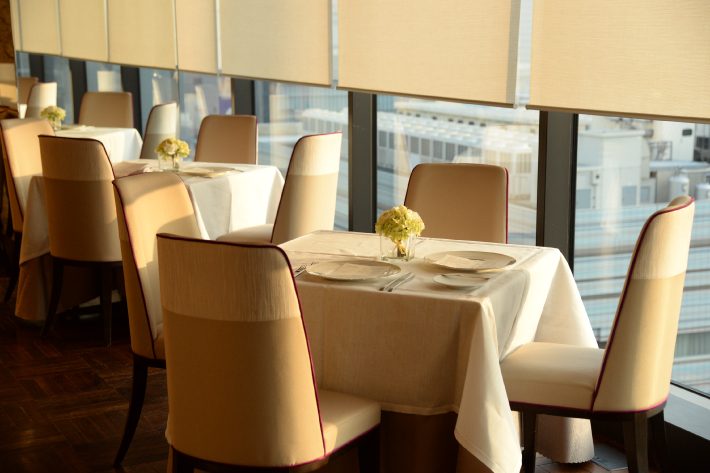
最上階13Fにある「THE GRAND GINZA(ザ・グラン 銀座)」は、GINZA SIXの飲食店の中では最大面積を誇るお店です。ラウンジやレストランからバンケット、茶室までいくつかのスペースに分かれ、さまざまなニーズに応えてくれます。今回ご紹介するのは47都道府県から取り寄せた旬の食材をフランス料理の技法を用いて提供するレストラン「THE GRAND 47」。訪れた昨年12月のテーマは食材の宝庫・北陸。かぶら寿司やいかの黒つくりをアレンジするなど、北陸の伝統の味をちりばめながら、洗練されたコース料理に仕立てています。しかも、福井が誇る銘酒、黒龍がグラスでいただけるという粋なペアリングも。小旅行気分で優雅なひとときが過ごせます。
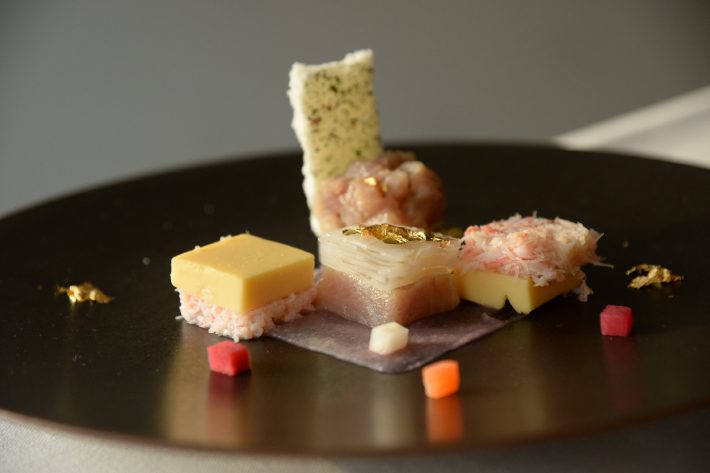
前菜は「北陸の伝統 押し寿司のインスピレーション ズワイガニと寒ブリ 野菜のキューブ」。郷土料理かぶら寿司に着想を得て、日本海の冬の幸が繊細なフレンチに昇華。色とりどりの料理がお皿の中に並んださまは宝石箱のようで、どれから食べようかと悩むほど。黒龍とのマリアージュが、味わいの楽しみを広げてくれます。
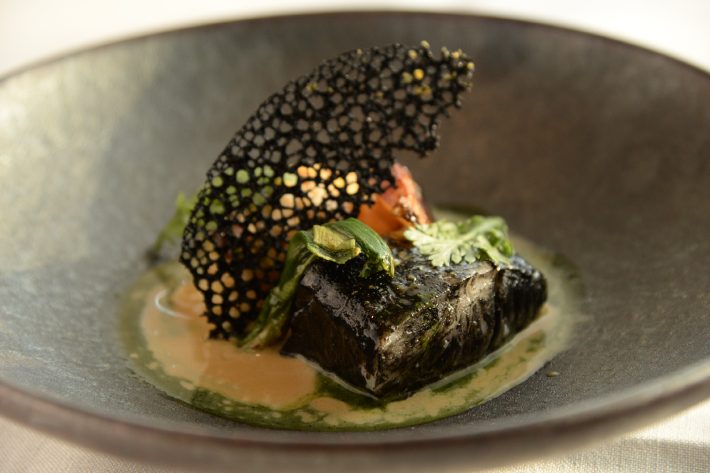
主菜の魚料理は「黒つくりで熟成させた鱈のポワレと白子のムニエル 太ネギのアラクレームと白ワインソース」。黒つくりとは富山の郷土料理で、いかの塩辛にいかすみを加えた珍味です。そのたれをまぶして熟成させることで、鱈がいっそう滋味深い味わいに。とろけるように甘い、太ネギをソースにしたあたりはさすが。フランスで修業したのち、神戸北野ホテルで研鑽を積んだ斎藤隼人シェフの腕が光ります。「お客様がそのエリアに興味を持つきっかけになれば本望です。来年はもっと産地に出向きたい」と意欲を燃やしています。

デザートは3品の中から「北陸産の酒粕と柚子のチョコレートミルフィーユ」をチョイス。
ふんわり舌の上でとろける酒粕を加えたチョコレートムースと香り高い柚子のコンビネーションが抜群。こちらのランチコースで3,800円(以下、全て税別価格)とお値段も良心的。デザートで満たされる頃には、次のテーマとなるエリアがどこかしらと、楽しみになっているはずです。
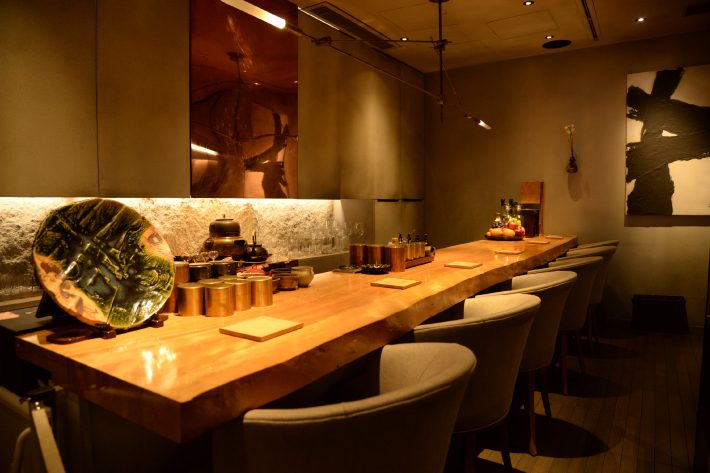
食後にぜひ訪れたいのが、同じ13Fの「MIXOLOGY SALON(ミクソロジー サロン)」という粋なバーです。ミクソロジーとはさまざまなアルコールに、ハーブやスパイス、フルーツなどを組み合わせて錬金術のごとく新しいカクテルを作り出す、近年のバーの新潮流。なかでも、こちらのサロンのテーマは“茶”。ほうじ茶、抹茶、中国茶、紅茶とあらゆるお茶を使ったカクテルが揃います。オーナーバーテンダーは世界的にも有名な南雲主于三さん。チーフバーテンダーはキュートな佐藤由紀乃さん。
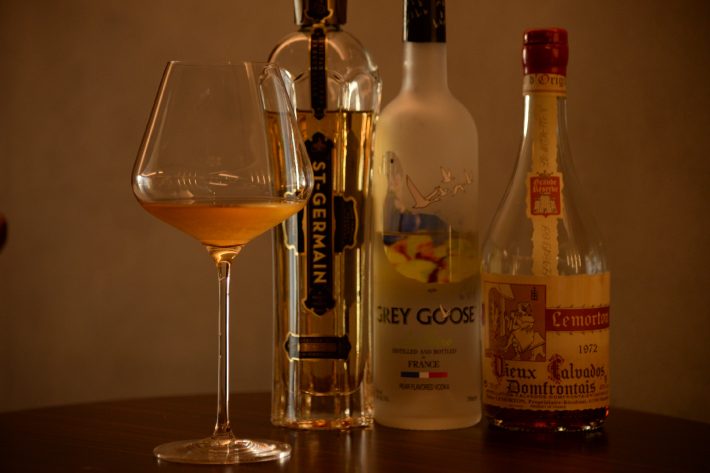
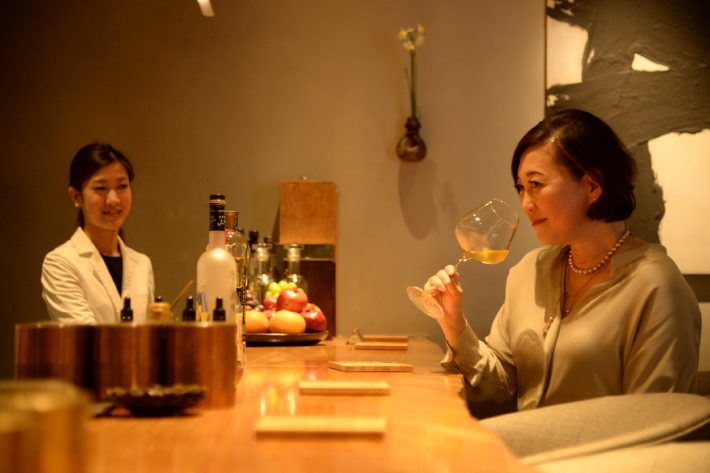
すっきりと高貴な香りと味わいで人気が高い、ジャスミンティーベースのカクテル「ジャスミンティーテイルNo1」(1,600円)。ジャスミンティーにグレイグースウォッカ、エルダーフラワーリキュール、カルバドスをミックスした琥珀色の液体が大振りのワイングラスに注がれると、エキゾチックな香りが立ち上ります。食前、食後はもちろん、昼下がりにもふと飲みたくなるい、蠱惑(こわく)的なカクテルです。

もう一つご紹介するのが、温かな抹茶のカクテル「抹茶のゴットファーザー」(1,600円)。白州12年とアマレット、沖縄県産黒糖を茶碗に入れ、茶筅で泡立てる美しい所作に見とれてしまいます。食後のエスプレッソがわりにいただくにも、最高の一杯です。ときには、カクテル3~5杯で起承転結のあるカクテルコースを構成してもらい、じっくり楽しんでみるのもよいでしょう。
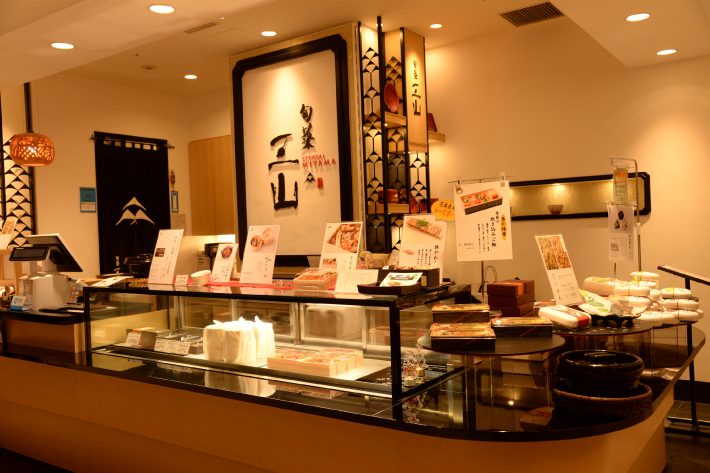
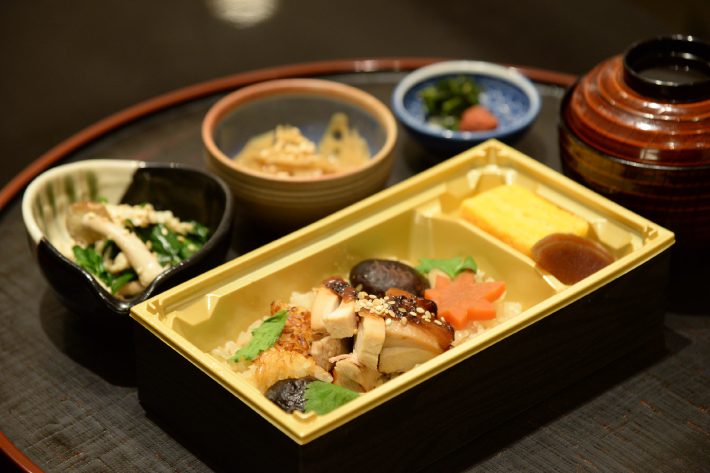

最後は、出汁と旬にこだわった素材に丁寧に手をかけた料理が自慢の「旬菜三山」。お弁当や一品料理の販売スペースの横に、イートインカウンターがあることを覚えておくと、お買い物の途中などに便利です。一番人気は炊き込みご飯御前(1,250円)。なにしろ、信楽焼の第一人者・中川一辺陶作の土鍋で1日に6~7回ご飯を炊き、炊き立てを出すのですから、とびきりの美味しさも頷けます。鶏の照り焼きに季節の野菜の小鉢がついたバランスのいいセットなのも嬉しい点。テイクアウトのお弁当はれんこんきんぴらやほうれん草と湯葉の煮びたしなど、野菜も豊富な二段弁当(2,000円)がよく出るそう。数が必要なときには予約をしておくと安心です。
Text:Hiroko Komatsu Photos:Akiko Fukuchi Edit:Yuka Okada
Located in the middle of Ginza, GINZA SIX is still a place where one encounters wonderful food cultures and ingredients from all around Japan. Of the unique array of restaurants and bars here, I’ve visited three that convey some of the special joys associated with Japanese culture.


THE GRAND GINZA on the 13th floor, the top of the complex, is GINZA SIX’s largest restaurant by floor area. Divided into a lounge, restaurant, banquet room, and tea room, the space is designed to meet the varying needs of its customers. Here I’ll introduce THE GRAND47, a restaurant that offers seasonal ingredients sourced from Japan’s 47 prefectures, prepared with French culinary techniques. As I recall, the theme when I visited this past December was “Hokuriku, a Treasure Trove of Food.” The elegant course-based meals incorporate a dash of traditional flavors from Hokuriku, including arrangements of sushi made with salted turnips (kabura-zushi) and salted squid mixed with squid ink (ika no kurotsukuri). The courses can be paired with glasses of Kokuryu sake, the pride of Fukui. It was an ideal setting for savoring moments of refinement, as if on a short vacation.

I recall the appetizer was Hokuriku Traditional Oshizushi Inspiration with Snow Crab, Winter Amberjack, and Vegetable Cubes. Inspired by the local kabura-zushi, felicitous winter catch from the Sea of Japan transmuted into a French delicacy. The multicolored cuisine arranged in the middle of the dish reminded me of a jewel box; one hardly knew where to start. The pairing with Kokuryu amplified the delightful flavors.

The main fish course was Kurotsukuri-Marinated Cod Poêlé and Soft Roe Meunière with Creamed Large Scallion and White Wine Sauce. Kurotsukuri, a local dish of Toyama, is made by adding squid ink to fermented squid. The cod is coated with this sauce and marinated to create a richer, more savory flavor. As one might expect, the sauce made with sweet large scallions was a meltingly sweet delight. The passion and skills of Chef Hayato Saito, who served his apprenticeship in France and continued his training at the Kobe Kitano Hotel, were on full display. “I love it when customers take an interest in the region after eating here,” he remarked. “Next year, I hope to visit more of the produce areas myself.”

From the three desserts on offer, I chose the Chocolate Mille-Feuille with Hokuriku Sake Lees and Yuzu Fruit, an outstanding combination of cloudlike chocolate mousse with lees that melt on one’s tongue, and highly aromatic yuzu fruit. This lunch course was reasonably priced at 3,800 yen (all prices listed before tax). As I filled up on dessert to finish the culinary tour of the Hokuriku region, I began casting about for another destination.

After dinner, a visitor would certainly want to visit Mixology Salon, a chic bar also located on the thirteenth floor. Mixology is an emerging trend at bars in recent years, wherein new cocktails are created, as if by alchemy, by combining various spirits with herbs, spices, fruit, and other ingredients. The theme of this particular bar is tea. Mixology Salon makes an assortment of cocktails using every conceivable variety of tea, including roasted green tea (hojicha), matcha, Chinese tea, and black tea. The owner-bartender is the globally renowned Shuzo Nagumo. The chief bartender is the charming Yukino Sato.


Shown here is the Jasmine Teatail No. 1 (1,600 yen), a popular jasmine tea-based cocktail with a crisp, noble aroma and flavor. An amber-colored mixture of jasmine tea with Grey Goose vodka, elderflower liqueur and Calvados is poured into the large wineglass, generating an exotic aroma. The result is a seductive cocktail ideal (naturally) before or after meals, and even in the early afternoon.

Another of the salon’s cocktails is Matcha Godfather (1,600 yen), a cocktail with hot green tea. Hakushu aged 12 years old, amaretto, and Okinawan brown sugar are assembled in a tea bowl and whisked with a bamboo tea whisk—I found myself captivated by the physical gestures that create the drink, making a surprisingly perfect substitution for espresso after the meal. It would also be tasteful to have a narrative of three to five glasses of cocktails composed at choice of the bartender.



Lastly, I went to Syunsai Miyama, an establishment that prides itself on carefully prepared dishes made with its special dashi soup stock and seasonal ingredients. You might find it convenient to remember, while shopping, the eat-in counter next to the sales space for bento and single-dish items. Their most popular offering is the meal with rice seasoned and cooked with various ingredients (takikomigohan gozen; 1,250 yen). The rice is cooked six or seven times a day in an earthenware pot made by Ippento Nakagawa, the leading figure in Shigaraki ceramics. This means the rice is freshly cooked, which helps make it extraordinarily delicious. The combination also nicely balances the teriyaki chicken with small servings of seasonal vegetables, another delight. Often ordered for takeout is the double-decker bento with ample vegetables (2,000 yen), including lotus root kinpira and simmered spinach and yuba (tofu skin). You’ll probably want to make reservations in advance for large orders.
Text:Hiroko Komatsu Photos:Akiko Fukuchi Edit:Yuka Okada
小松 宏子
フードジャーナリスト。祖母が料理研究家の家庭に生まれる。広告代理店勤務を経て、フードジャーナリストとして活動。各国の料理から食材や器まで、“食”まわりの記事を執筆。料理書の編集や執筆も多く手がけ、『茶懐石に学ぶ日日の料理』(後藤加寿子著・文化出版局)では仏グルマン料理本大賞「特別文化遺産賞」、第2回辻静雄食文化賞受賞。


